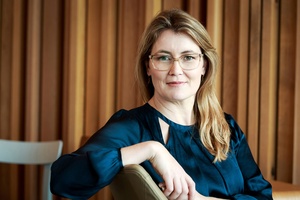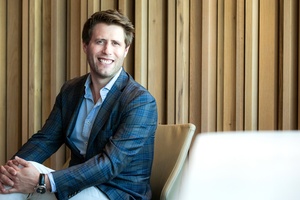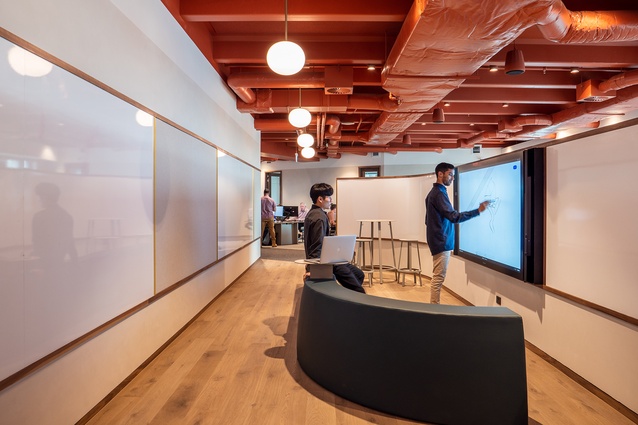Unispace survey explores client needs in workplaces of the future
Unispace New Zealand's Kate Horton and Harry Rowntree use the company's latest data on client opinions from their WorkReady survey to assess what the evolution of Kiwi workplaces might look like.
Anyone who designs offices, or works in one, will recognise the way the COVID-19 pandemic has thrown the workplace into a state of turmoil. Businesses and employees now embrace the reality that the office is not the only place where work can be completed productively.
As New Zealand manages its COVID-19 levels to achieve a relative normality, the speculations about the future of the workplace have moved from being less ‘what if?’, to ‘what now?’.
We’ve gone from conversations about the dissolution of the office, to the power of coming together in the workplace and what will get people back.
The WorkReady Survey
The Unispace WorkReady survey, built from our existing employee online survey, was developed quickly once it became how apparent that COVID-19 was here to stay. It was devised to directly capture employee sentiment around the return to work – focusing on factors such as wellbeing, culture, productivity and remote working. The granular results help organisations to make much more informed decisions about how and where their people will work most effectively in future.
The survey captures the ‘voice of the masses’ for individual organisations. Assisting both executive and property teams with the big picture questions: what purpose will the office serve in future? How many people will work there? What kind of work should be done there, and what may be better done remotely? What kind of spaces are needed, and why? How should they look and perform?
The consolidated results of our COVID-adapted WorkReady survey has so far found that only 48 per cent of office workers want to return to the office for three days a week or more.
After remote working statistics, one surprising output from the WorkReady survey has been how it reveals the dangers in inherent assumption about employee sentiment. The results, across multiple client companies, have enabled Unispace to develop a range of worker personas and to track how they feel about the return to work. One particular example, is where introverts are more keen to return to the office than extroverts.
The survey has also proven only marginal declines in actual desk utilisation. Kate Horton, principal for strategy at Unispace, explains, “Pre-COVID, private companies in New Zealand were only using 44 per cent of their desk space – private sector organisations were only using 34 per cent. Post-COVID, the average is 30 per cent. It was always an issue; the pandemic has just brought it into sharper focus because the occupancy has dropped even further.”
The shedding space question
Accepting that a proportion of employees will be working away from the office for at least some of the time has led some companies to consider shedding space to make a saving. However, that’s not always the only option.

Kate explains, “For example, who wants to go back to sitting in a sea of workstations, especially if allocated per person means your nearest colleague is now 15 metres away? It’s going to feel like there’s tumbleweed blowing through the office. That’s not good for the individual, for the team or for the organisation. Nor is it good for wellbeing, productivity or costs.
“Every client we are working with now are looking at their workplaces from a new vantage point. Utilisation rates are lower, and yes, the average organisation could comprehend a 30 per cent reduction in space than before. However, that doesn’t necessarily mean reducing the footprint is the right way forward; it could equally mean using the space better.
“It’s clear that any future workplace strategy which only considers the office is fundamentally flawed. Home, and remote working, is now part of the workplace, and it needs planning in accordingly.”
The primary observation from the WorkReady survey responses in partnership with leadership objectives has been, “instead of focusing on space and tasks, where the output is just going to be workpoints and meeting rooms, office design now needs to focus on the experiences that will draw people into the office – but only when it makes sense for them to be there.”
Interestingly, COVID has thrown this conversation wide open. Before COVID, Corporate property decisions and changes to ways of working were led by the organisation’s property team, now, according to regional principal for design, Harry Rowntree, it’s a topic that most senior leadership teams are actively engaging in and driving.
“It’s fantastic that senior executives have workplace strategy front and centre on their agenda, and are pushing for change,” he says. “While cost is certainly a consideration, it’s not the whole story. It’s preserving culture and protecting productivity that are increasingly leading the conversation.”
The workplace response: Experience-based working and the destination workplace
“We’re social creatures and it has been fascinating to see how quickly our social distancing patterns have dropped away and life has settled back to relative normality. One of the few silver linings, has been Covid’s impact on our management styles. Overnight, presenteeism was eradicated and all of us have moved to a trusted ‘output-based’ measure of performance.”
– Harry Rowntree, regional principal, design
Unispace’s research reveals that the experiences best suited to productivity and culture, are the shared spaces for problem-solving, innovation and socialising; those aspects of work that people missed in lockdown. The home setting, on the other hand, is proven to be conducive for focus tasks, e-learning and wellness. Organisations therefore need to put a focus on creating a destination for their employees, a place where they don’t have to be but want to be.

“So to leverage the power of the collaboration, we’re now designing destination workplaces: workplaces that offer the perfect setting for collective experiences that best gets done in the workplace,” Rowntree says. “It means a shift from activity-based working, which is all about tasks, to experience-based working, by making the office that highly desirable and productive place to be – and in turn introducing an element of FOMO for those not in office.
Unispace has already implemented this new approach to the workplace. Its Auckland studio was the first in the world to pilot the company’s new framework for the future workspace, named Propeller. This model aims to take the best of remote-working and blends it with the best of office-based work, delivering a holistic workspace that is ultimately flexible and designed around the kind of curated experiences that employees want to enjoy in the office.
“In applying Propeller in our own studio, we took inspiration from hospitality, concierge, foodservice and co-working experiences,” says Horton. “Now, every inch of space works harder and delivers more.
“These days, organisations can’t afford to have spaces that are only used for an hour a day. So we have no dedicated waiting areas, and meeting spaces can be reconfigured within seconds. Desks are all unassigned, and we’ve removed some workstations in favour of stand-up innovation spaces for faster planning and problem-solving.
“Many of our clients are grappling with the question of blending physical and digital environments. This was a particular challenge that we really wanted to get right. It’s manifested in every space being tech-enabled. From acoustically-design video conference (VC) ‘Teams’ booths to two-person VC-enabled workshop rooms, and larger open and enclosed spaces. Where there’s technology, there are whiteboards and the people on the end of line can see them. This approach has blown open our connectivity.”
Clients are taking Propeller’s experience-based approach very seriously. The Unispace Auckland workplace was designed for clients to co-work, and the experiment seems to be working. Clients are booking spaces in the new workplace to host Board meetings and hosting project scrums live in the space.
Bringing organisational factors closer
A further effect of the pandemic has been to bring workspace strategy and design much closer to other core business functions. The office is one of the most significant expressions of an organisation’s existence; besides being large and costly, it creates a response in employees, clients and visitors alike. This means the office is intrinsically linked to both brand and human resources.
“With the home now forming part of the greater workplace, and potentially diluting the lure of the office, it’s more important than ever to ensure that brand, HR and workplace are operating in harmony,” says Horton. “When people are being recruited and deployed remotely for a significant proportion of the time, it’s difficult to onboard them, mentor them, develop them and retain them. This means that the office must work harder than ever to support the organisation’s goals.”
Horton concludes, “There’s no doubt that the pandemic experience has been tough on everyone. But, it has also presented a rare opportunity to think radically different.” She notes that organisations and, in turn, designers with them as their clients “need to be considering the value proposition of their offices: what do they mean to employees? And how can that meaning be engineered – based on real data – to deliver the most rewarding experience both for the individual and for the enterprise?”










